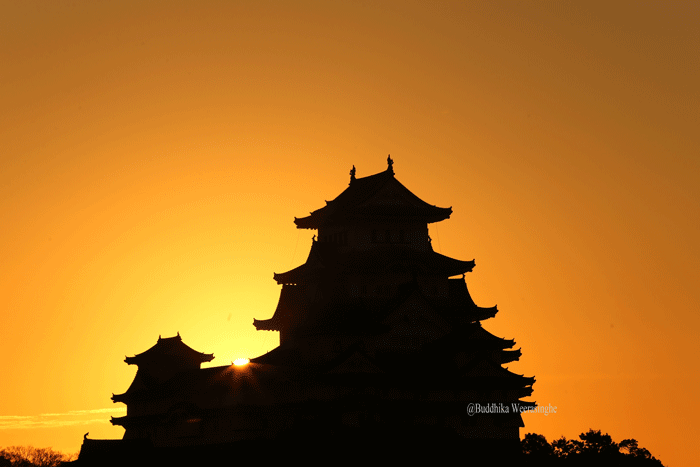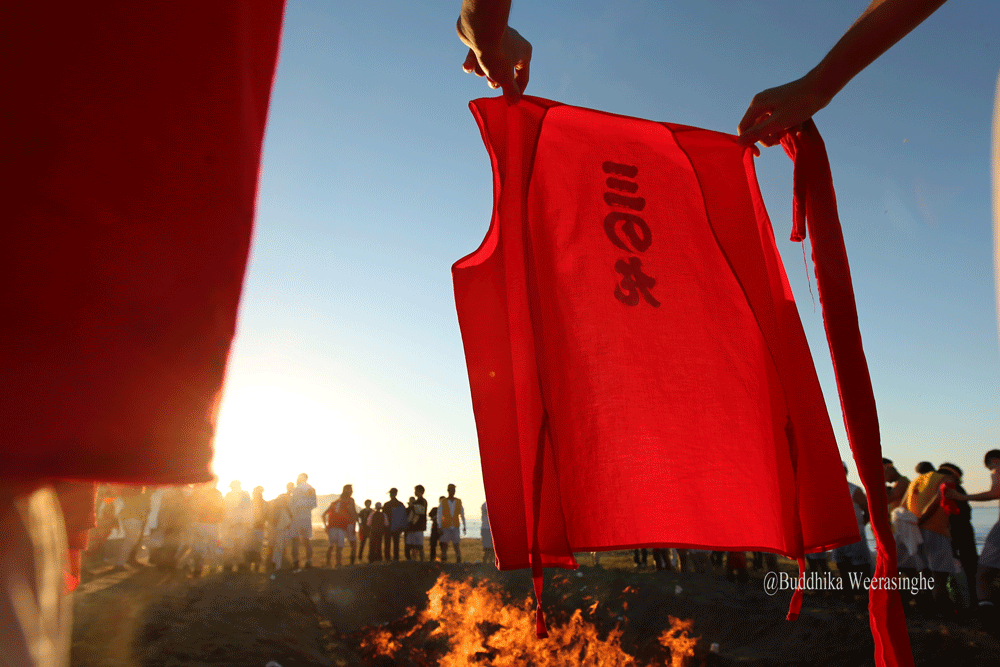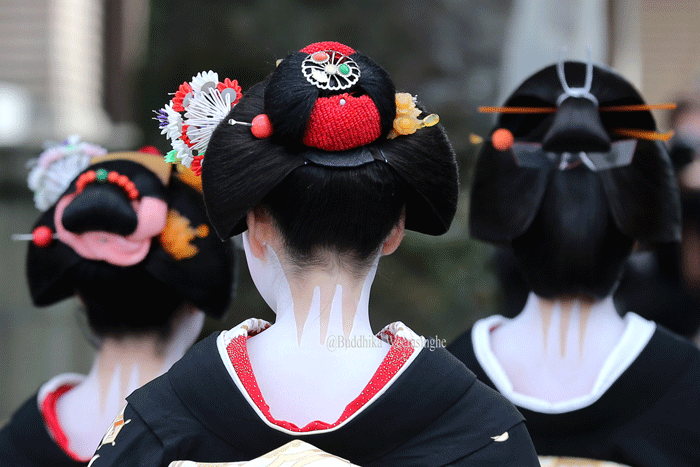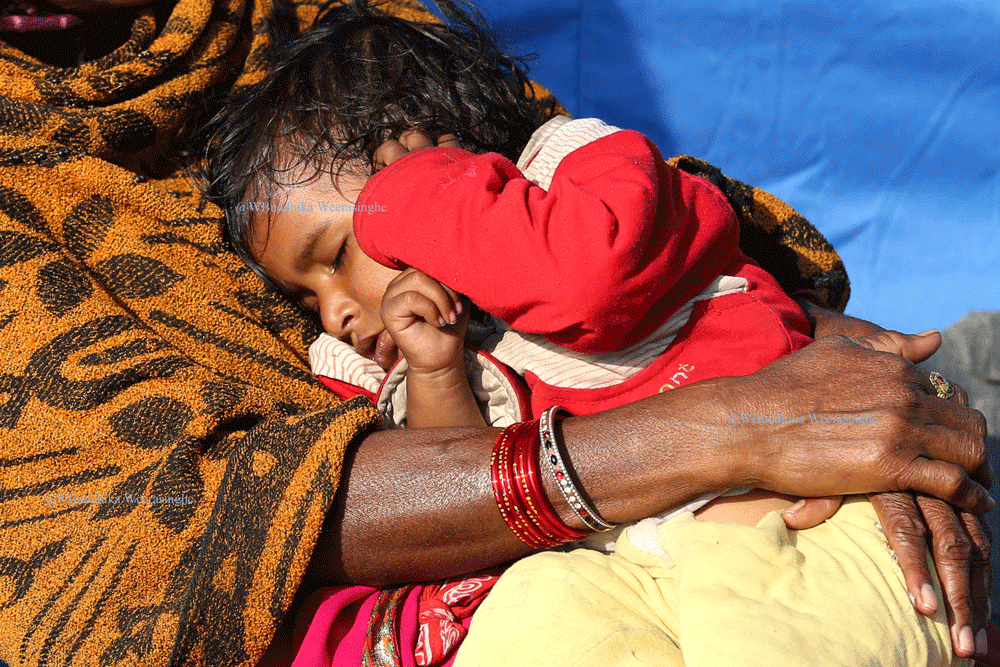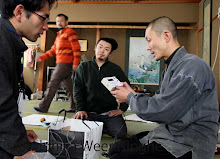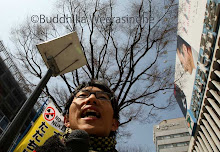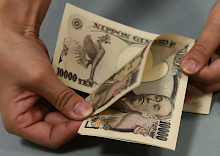 Japanese men wear the traditional costume and hat cleans the cannel of Fukui castle. Fukui Castle built in 1606 and castle was destroyed by fire in 1669. In 1945, the palace was destroyed by US Air Force firebombing during World War II. Today, local government and police office stand in there.
Japanese men wear the traditional costume and hat cleans the cannel of Fukui castle. Fukui Castle built in 1606 and castle was destroyed by fire in 1669. In 1945, the palace was destroyed by US Air Force firebombing during World War II. Today, local government and police office stand in there.Saturday, December 26, 2009
Clean the cannel of Fukui castle.
 Japanese men wear the traditional costume and hat cleans the cannel of Fukui castle. Fukui Castle built in 1606 and castle was destroyed by fire in 1669. In 1945, the palace was destroyed by US Air Force firebombing during World War II. Today, local government and police office stand in there.
Japanese men wear the traditional costume and hat cleans the cannel of Fukui castle. Fukui Castle built in 1606 and castle was destroyed by fire in 1669. In 1945, the palace was destroyed by US Air Force firebombing during World War II. Today, local government and police office stand in there.Saturday, December 19, 2009
Winter Strom Hits Fukui
 A kid makes snow ball during his parent removes snow front of their beauty saloon in Fukui, Japan December 18, 2009. Heavy snow has fallen in the past 48 hours in Fukui, northern part of Japan.
A kid makes snow ball during his parent removes snow front of their beauty saloon in Fukui, Japan December 18, 2009. Heavy snow has fallen in the past 48 hours in Fukui, northern part of Japan.
A man removes snow front of the beauty saloon in Fukui, Japan December 18, 2009. Heavy snow has fallen in the past 48 hours in Fukui, northern part of Japan.

A kid makes snow ball during his parent removes snow front of their beauty saloon in Fukui, Japan December 18, 2009. Heavy snow has fallen in the past 48 hours in Fukui, northern part of Japan.

A kid plays with snow during his parent removes snow front of their beauty saloon in Fukui, Japan December 18, 2009. Heavy snow has fallen in the past 48 hours in Fukui, northern part of Japan.
Friday, December 18, 2009
The first snowfall
Thursday, December 17, 2009
Ready to end 2009
Sunday, December 6, 2009
Geisha, traditional Japanese artist-entertainers.
 Geisha is a traditional Japanese artist-entertainer and one of a symbol of Japanese culture.
Geisha is a traditional Japanese artist-entertainer and one of a symbol of Japanese culture.  They entertain customers through several of performances, for example, singing, dancing and playing
They entertain customers through several of performances, for example, singing, dancing and playing  instruments. ‘Gei' means arts or performances, and ‘Sha’ means people in Japanese.
instruments. ‘Gei' means arts or performances, and ‘Sha’ means people in Japanese.  Geisha were most popular in the 18th and 19th centuries in Japan.
Geisha were most popular in the 18th and 19th centuries in Japan.There are two basic types of geisha. One is called “tachikata” who mainly do traditional Japanese dance (mai). The other is called “jikata” who mainly sing or play instruments.
 On December 5,2009, Geisha in Awara Onsen (hot spring) area in Fukui held a special event for the tourist to make them familiar with Geisha performance. Geisha in Awara Onsen have more than 120 year-old history. It uses to be very popular and there were more than 250 Geisha. However, now the number decreased grammatically up to 20, because people lifestyles have been changed.
On December 5,2009, Geisha in Awara Onsen (hot spring) area in Fukui held a special event for the tourist to make them familiar with Geisha performance. Geisha in Awara Onsen have more than 120 year-old history. It uses to be very popular and there were more than 250 Geisha. However, now the number decreased grammatically up to 20, because people lifestyles have been changed.
Thursday, December 3, 2009
Korean labors Demand Japan’s Apology and Compensation
 “Now is the time for the Japanese government to compensate the people for the war time damage” … under that banner two Korean nationalist ladies held the campaign and demanding of compensation for during the second world war time force to work in Fujikoshi company in Toyama prefecture in Japan. Their held the campaign with local right activists in the main entrance of Fujikoshi company.
“Now is the time for the Japanese government to compensate the people for the war time damage” … under that banner two Korean nationalist ladies held the campaign and demanding of compensation for during the second world war time force to work in Fujikoshi company in Toyama prefecture in Japan. Their held the campaign with local right activists in the main entrance of Fujikoshi company.
Thousand four hundred school girls and 540 male of Korean were brought to Japan before and during the war and forced to work in factories for little or no pay as Japan desperately tried to keep its war machine going. During the Japanese colonial rule period of Korea thousands of younger brought to Japan for force to work. Japan military wad occupied Korea in 1910 and Korea was united until 1948.
Jeon Oknam, 79 years old and An Huisu 78 years old, Korean nationalist ladies brought to Japan when their were young girls in 1944. That times their were 14 and 13 years old student.

“Fujikoshi Company not had given any payment for us during our working period and who send back us by ship north part of Korea in 1945. Their promise our all salary settle one year later and they start company north part of Korea. That is totally lies” said, Jeon.
In 1998, Japanese machine tool manufacturer Nachi-Fujikoshi Corp agreed to pay 30 million yen ($272,500) to 40 million yen in compensation to three Korean plaintiffs for forced labor during World War II, the first settlement brokered by Japan's Supreme Court over wartime forced labor.

Then another 22 Koran including Jeon and An who were force to labor work during the World War second submit the legal action in Japan court and seeking of compensation by government and Fujikoshi company.
Monday, November 30, 2009
Shimenawa ….(標縄・注連縄・七五三縄)
Saturday, November 28, 2009
いちょうと紅葉(もみじ)
Friday, November 20, 2009
Radish
 Radish....is one of a main vegetable in wintertime in Japan. They use it by putting on Soba as a source, some eat by boiled. They also make pickles with it so that they can keep it in wintertime.
Radish....is one of a main vegetable in wintertime in Japan. They use it by putting on Soba as a source, some eat by boiled. They also make pickles with it so that they can keep it in wintertime. 
Last week, thousands of radish appeared in the central city area in Fukui.
The agriculture association of Fukui put them to appeal their products.
 In the countryside of Fukui, they make pickles by drying radish like this.
In the countryside of Fukui, they make pickles by drying radish like this.

Subscribe to:
Posts (Atom)






























